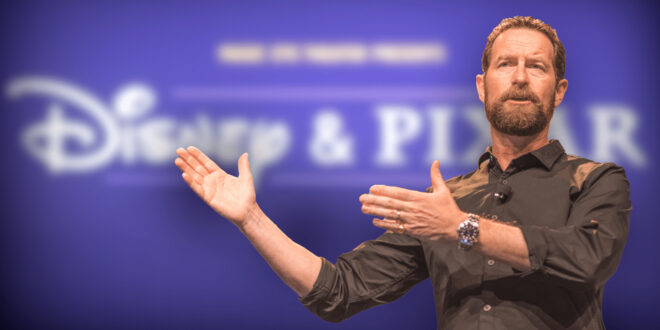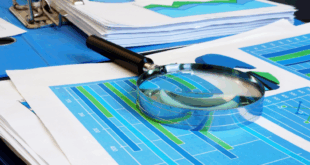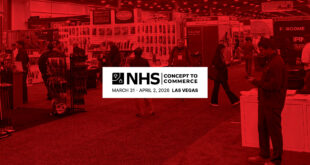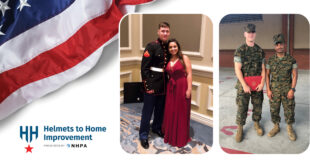With 30 years working at the most magical place on Earth, Duncan Wardle knows a thing or two about innovation and creativity and will be sharing those insights with attendees of the 2025 Independent Home Improvement Conference, hosted by the North American Hardware and Paint Association (NHPA) and The Hardware Conference. During his keynote—Innovating Customer Experience—Wardle will use real world examples to share innovation tools developed from his experience with thousands of global Fortune 500 companies and 30 years of experience with the Walt Disney Company.
At Disney, Wardle helped teams at Disney Parks, Lucasfilm, Marvel, Pixar, Imagineering and Animation to innovate, creating magical new storylines and amazing experiences for consumers around the globe. He now brings his Disney experience to audiences around the world, delivering a series of keynotes, master classes and ideation forums that help people capture unlikely connections, leading to both disruptive thinking and revolutionary ideas. He is a multiple TEDx speaker and frequent contributor to Fast Company, Harvard Business Review and Forbes, and he teaches innovation and creativity master classes at Yale University and Harvard University.
Attendees will learn how to harness creativity to turn a product-centric culture into a consumer-centric one, create a sustainable culture of innovation and creativity throughout their organizations and lead every employee to think creatively. Wardle will also share how to leverage high-tech to enable high-touch, deliver record guest satisfaction and address the biggest consumer pain points.
Wardle sat down with Hardware Retailing and shared more on his passion for creativity and takeaways from his time at Disney.
Hardware Retailing (HR): Where did your passion for creativity and innovation begin?
Duncan Wardle (DW): It’s been from a young age. I found an art book the other day from when I was probably seven or eight, and I had drawn all the Disney characters. I used to love playing with Lego bricks; I loved that you could make whatever you wanted with Lego. I still see animals in the clouds—at some point, we look up and we can only see clouds, and I was thinking that’s terribly sad. Everyone is born creative, but we don’t all embrace it.
HR: What are some simple ways people can tap into their creativity in their everyday and professional lives?
DW: It always amazes me that so many people identify as not creative. I define creativity as the ability to have an idea, and we all have hundreds of ideas every single day. I think people confuse creativity with innovation, which I define as the ability to get an idea done. That’s kind of the hard part. I think the No. 1 biggest barrier for most people is they don’t give themselves time to think. Then the moment they give themselves time to think—they step in the shower, they go for a walk—suddenly there’s that epiphany of a big idea. Because we go past the same stimulus day in, day out, our brain physically shuts down—no fresh stimulus in equals no new ideas out. Becoming more creative can be as simple as taking a different commute, listening to a different radio station or going for a walk.
HR: What were some of your favorite parts of working at Disney?
DW: The mad stuff. I created a Super Bowl halftime show in 2000 with Christina Aguilera, Enrique Iglesias, Phil Collins and Toni Braxton; that was fun.
I got to build an Olympic-size swimming pool from the train station all the way to the castle at Disneyland for Michael Phelps to swim down. I sent my son’s Buzz Lightyear into space, and he became the world’s longest astronaut in space, spending
18 months in space before settling at the Smithsonian National Air and Space Museum. I got to work with five U.S. presidents and host the Super Bowl MVP every year at a Disney parade. What I liked about Disney was that the impossible could be possible. I call it impossible or I’m possible; the only difference is the apostrophe.
HR: Since Disney, how have you continued to spread your message of innovation and creativity?
DW: In 2017, I received the bronze Cricket from Disney, which they give you to thank you for 30 years of magical service. I knew I was ready to do something else but wasn’t quite sure what I wanted to do. Having worked for the world’s most creative company for 30 years, I knew I didn’t want to work for someone else. Someone invited me to do a talk, so I did that, which led to another talk and then branched out from there. About 50% of my work now is giving speeches, 30% is training people and 20% is taking on a real challenge and actually helping them brainstorm against a real particular challenge. I love the workshops, because you get a group of people who think they are not creative and can’t innovate. And you just see the smile on their face halfway through the day when they realize they can do it.
HR: What will attendees take away from your keynote at the Independent Home Improvement Conference?
DW: We make creativity too difficult because we overthink everything and experience analysis paralysis. So I created a tool kit that takes innovation and makes it accessible to normal hardworking, busy people and makes creativity tangible for people who are uncomfortable with ambiguity. My tool kit makes the process fun, giving people tools that are enjoyable to use, because I’m a great believer that if people enjoy using them they actually use them. In my keynotes, I certainly hope I can inspire and motivate people, but what people really want is a couple of tools to take away they can use.
My keynote is specifically designed to appeal to all three learning styles—auditory, kinesthetic and visual learners. Yes, I will be talking for the auditory learners but there will also be lots of exercises for the kinesthetic learners and all my presentations are hand drawn for my visual learners.
Register Today
Save your spot and register for the 2025 Independent Home Improvement Conference at IHIConference.org. We can’t wait to see you there!
 Hardware Retailing The Industry's Source for Insights and Information
Hardware Retailing The Industry's Source for Insights and Information






